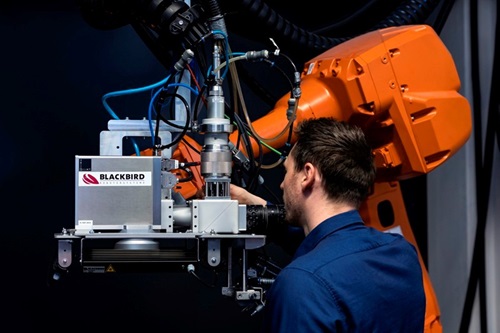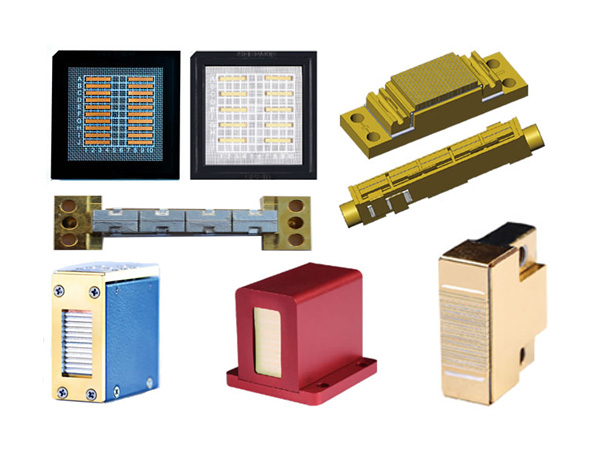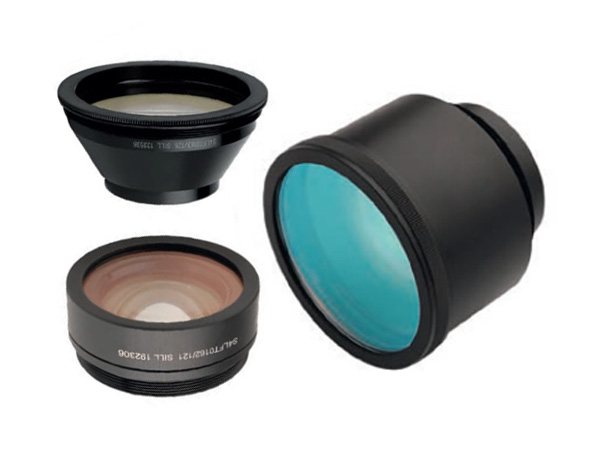Innovations in laser scanning heads and beam shapers boost fuel cell production
Scanlab, a manufacturer of high-end scanning heads, and its sister companies Blackbird Robotersysteme and Holo/Or are developing new system concepts for industrial laser applications such as laser welding of bipolar plates and additive manufacturing. The novel scanning setup integrates a tailor-made beam shaper and shows the potential to nearly double the productivity of bipolar plate welding for hydrogen fuel cells. Lasers
Fuel cell technology has long been considered a niche market. Due to the transitional phase of energy production and the search for alternative drivers, market demand is likely to grow significantly. For more efficient mass production, there is a need to increase the welding yield of the metal bipolar plates used to build fuel cell stacks.
High welding speeds require fast scanning systems and high power, both of which can be achieved. However, the welding process itself determines the maximum achievable speed. When certain speed limits are exceeded, weld failures such as hump effects and undercutting can occur.

Image credit: Scanlab
Blackbird Robotersysteme has built a test platform integrating the 2D scanning head intelliSCAN from Scanlab and the newly developed Flexishaper from Holo/OR, a full range adjustable beam shaper. The necessary beam shapes were determined on the basis of welding process simulations. The layout of the beam shaper used is the result of a combined optical design, integrating diffractive optics and a scanning system. Processing tests have shown that the platform increases the speed limit for trouble-free welding from 45 to 70 metres per minute.
Processing experience with DOE
Thin plate welding of bipolar plates has similar requirements to the laser powder bed fusion process. Both require scanning areas up to 500 x 500 mm2 in size and typical processing speeds of around 1m/s and below. Also in metal 3D printing, the processing speed is not limited by scanner speed or available laser power, but it is mainly the process itself that limits throughput.
Georg Hofner, CEO of Scanlab, says: "Our joint company holding creates the trust that is necessary for close co-operation in exploring innovative solutions. Only in such a setup is it possible to openly analyse upcoming market requirements and transfer the results to optical design."
Karl Christian Messer, CEO of Blackbird Robotersysteme, says: "Our sister company provides us with an architectural suite that we can translate into tangible benefits for the market and our customers based on our specific experience and application knowledge."
Israel Grossinger, President of Holo/Or, said, "This is exactly the kind of collaboration that creates high-value products by combining our unique beam shaping technology with our sister company's in-depth understanding of the market."
The next step will be to test the laser welding concept in a larger setup and pursue different applications at the same time. As fiberSYS fulfils the requirements of both LPBF and laser welding processes, the integration of DOE into this scanning system, which is particularly suitable for multi-head laser machines, is also included in the development blueprint.
 English
English Français
Français Deutsch
Deutsch euskara
euskara Русский язык
Русский язык Italiano
Italiano Português
Português Nederlands
Nederlands Polski
Polski Greek
Greek Lietuva
Lietuva Türkçe
Türkçe 日本語
日本語 한어
한어 中文
中文 தாமில்
தாமில் فارسی
فارسی हिंदी
हिंदी Tiếng Việt
Tiếng Việt ภาษาไทย
ภาษาไทย Pilipino
Pilipino Indonesia
Indonesia தாமில்
தாமில்





